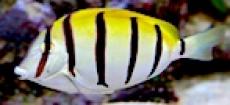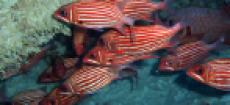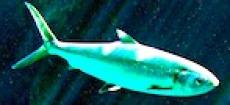This introduction to the biology of fishes gives an overview of the concepts and activities explored in this unit and describes how these investigations build an understanding of ocean literacy.
Fish
Fish are some of the most recognizable aquatic organisms in both freshwater and marine habitats.
-

-

Fish are a very diverse group of animals with a broad range of shapes, sizes, and behaviors. Fish serve as a model to study the biology of vertebrates.
Activities: -

Fishes were the first vertebrate animals to evolve from invertebrate ancestors. They have since continued to evolve into a wide diversity of forms with a wide variety of lifestyles.
-

Anatomy is the study of an organismŌĆÖs structures. Fishes come in a diverse array of forms, many with special modifications.
Special Features: -

Fish eat a wide variety of food items. The worldŌĆÖs largest fishŌĆöthe whale sharkŌĆöeats microscopic food items called plankton.
-

Fishes have been swimming and reproducing for over 450 million years on Earth. During this time, fishes have undergone changes that help them live better in some water habitats than in others.
Activities:








